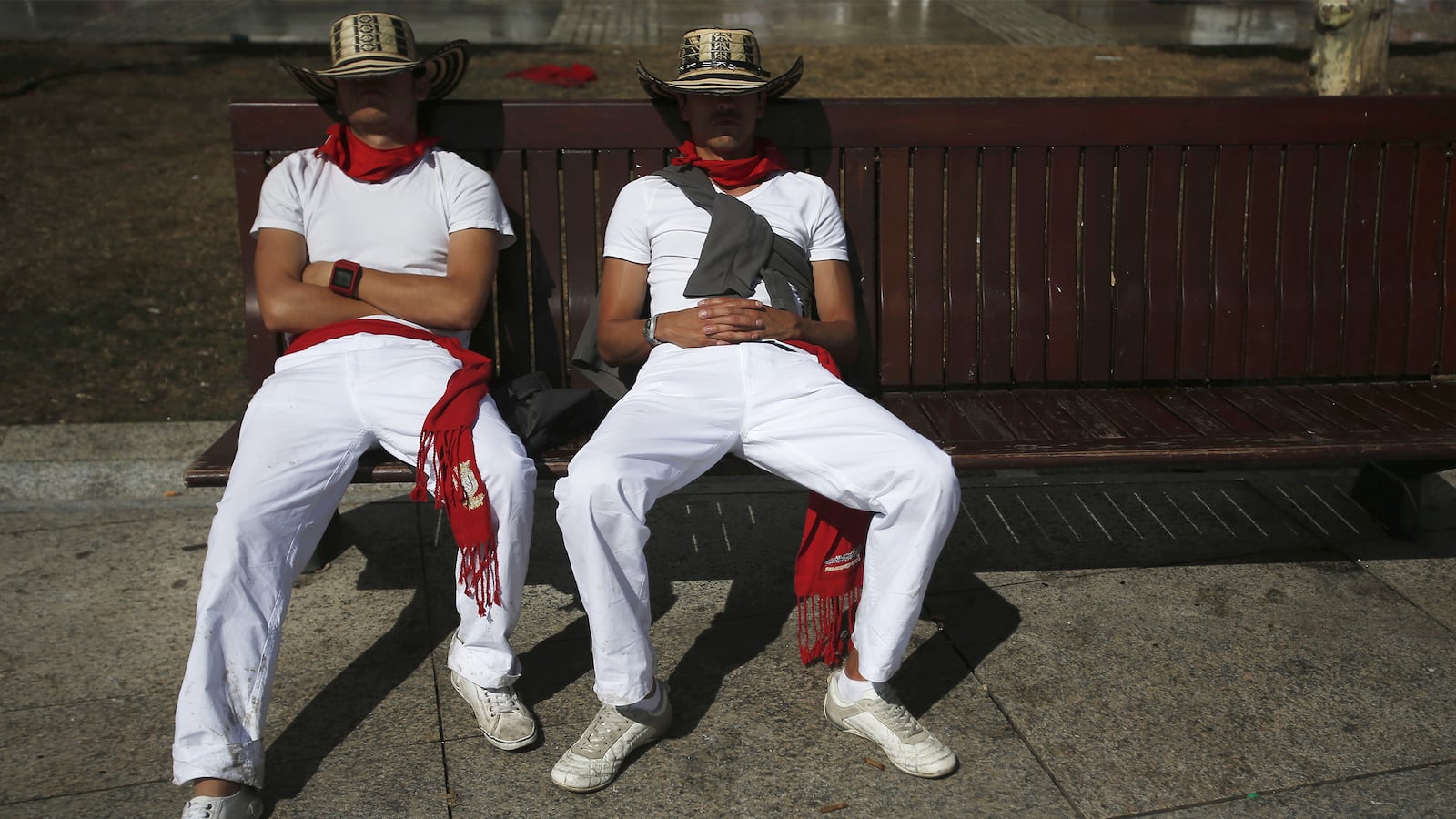In the past two weeks the Spanish government has announced that it is considering eliminating the siesta from the national schedule. The siesta—known as the afternoon nap to the rest of us—is a cultural staple in Spain. The move is encountering resistance from activist groups that see this as part of the country’s identity. The National Association of Friends of the Siesta, for example, held a national championship in Madrid in 2013, awarding points for sleeping, snoring, and costume. They’re not thrilled with the announcement.
The Siesta as we know it originated in Spain, the term being derived from the Latin hora sexta (sixth hour, or noon). But it has a much longer history. The author of the fifth century BCE Hippocratic text On Regimine recommends a daily siesta during the summer to prevent the hot weather from drying out the body. Napping after eating (aka the food coma) was also prescribed by ancient doctors in the text: “After a meal, [sleep] warms and moistens, spreading nourishment over the body.” According to his biographer, the emperor Charlemagne was also known to fully undress and nap for two to three hours in the afternoon.
Conventional thinking maintains that people take siestas because it is simply too hot to go out in the middle of the day. As the adage goes, “Only mad dogs and Englishmen go out in the midday sun.” It’s certainly true that countries that practice the siesta tend to be hot, but there’s more to it than that. In 1940, the military dictator Franco moved the Spanish clocks one hour ahead in order to bring the country into line with Nazi Germany. As a result, the sun sets later in Spain because the country has been in the wrong time zone for the past seven decades. The siesta is a way to accommodate one’s sleep schedule to the late setting of the sun.
But just because the siesta is fun doesn’t make it good for you. A study conducted in Costa Rica (another siesta-practicing country) by faculty at the Harvard School of Public Health linked the siesta to heart attacks. Other studies have linked it to diabetes. It’s not good for Spain’s economy either, experts say. The break disrupts the workday and costs the country billions; the resulting late work hours limit family time and contribute to a decline in the national birthrate.
Sleep seems like the kind of thing that wouldn’t have a history—we need to sleep, we sleep. If we don’t sleep we get cranky, chubby, sick, and possibly crazy. Simple. But the truth is that the way we sleep has changed over time, and, as the recent news from Spain shows, sleep isn’t just about a powerful need to rest. Sleep patterns vary wildly not just from person to person but from culture to culture.
Today the majority of Westerners sleep in eight-hour stretches. This is something that doctors and advertising tell us we need in order to function properly. But this wasn’t always the case. Napoleon Bonaparte prescribed six hours for a man, seven for a woman, and eight for a fool.
But Bonaparte wasn’t one of history’s famous short-sleepers. Unlike Leonardo Da Vinci, a polyphastic sleeper who slept for 15 minutes every two hours, Bonaparte was one of many who slept in short bursts. He would sleep for a few hours, rise at 3 a.m. to work, bathe, and return to sleep for a few hours. In At Day’s Close, historian Roger Ekrich of Virginia Tech drew together diaries, court records, anthropology, and high literature to demonstrate that many people slept in two sittings (dual sleeping). There was a first sleep, which began after dusk, followed by a waking period of one to two hours, and then a second sleeping period. During the waking period people would read, pray, have sex, and even visit neighbors. A 16th-century doctor’s manual actually argued that this was the best time of the day to conceive.
Ekrich’s historical study has scientific backing. In the 1990s, the psychiatrist Thomas Wehr conducted a study in which he placed subjects in total darkness for 14 hours a day for a month. Sure enough, after a month the subjects developed a new sleeping pattern, in which they would sleep in two approximately four-hour stretches.
Dual sleeping began to disappear in the 17th century. Ekrich attributes its demise to the development of street and domestic lighting and the rise of coffee houses. As people had more caffeine and more light, they began to condense their sleeping periods into a single stretch.
All of this has profound implications for people who have trouble staying asleep at night. Doctors have been telling us for years that screen time is playing havoc with our body clocks. But perhaps the problem is more extensive than we know. Today advertising encourages us to medicate ourselves if we have trouble sleeping for eight straight hours. But sleeping for extended periods might not be natural at all; it might just be our bodies’ response to artificial stimuli like caffeine and lighting. So if your partner wakes you up in the middle of the night because he’s unable to sleep, spare him your wrath. After all, you’re the one with the abnormal sleep pattern. Maybe you should try a siesta?






